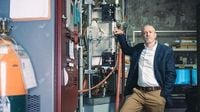Texas has long been a powerhouse in the world of aviation and aerospace. From the hum of defense manufacturing in Fort Worth to Houston’s storied role in space exploration, the Lone Star State is synonymous with flight and innovation. But as the aerospace sector experiences a surge in growth and investment, a less visible crisis is brewing: a critical shortage of skilled engineers and aviation maintenance technicians threatens to stall the industry’s upward trajectory.
This workforce gap is not unique to Texas, but the state’s scale and momentum make the stakes especially high. According to the Texas Economic Development Corporation, Texas is home to more than 1,400 aerospace and aviation establishments and boasts a “large and diverse talent pool of over 150,000 skilled workers” in the field. Each year, nearly 11,000 aerospace- and aviation-related degrees are awarded in Texas alone. Yet, the pipeline of talent is struggling to keep up with demand. As the U.S. employment outlook for aerospace engineers shows about 71,600 jobs in 2024 and a projected job growth of 6% through 2034, retirements are beginning to outpace the influx of new professionals, as noted by the American Institute of Aeronautics and Astronautics (AIAA).
The shortage is even more acute among aircraft maintenance technicians (AMTs) and mechanics. The Aviation Technician Education Council (ATEC) and consultancy Oliver Wyman report that the U.S. civil commercial aviation maintenance workforce exceeds 431,000 personnel, but a 10% shortfall in certificated mechanics is forecast by 2025 for the commercial air transport sector. Globally, projections suggest that by 2034, 416,000 new technicians will be needed just to keep pace with fleet growth and retirements, with up to 83% of the current workforce set to retire or leave in some regions over the next decade.
The U.S. Bureau of Labor Statistics (BLS) offers further evidence of the crunch: there are about 160,800 jobs for Aircraft and Avionics Equipment Mechanics and Technicians in 2024, with a projected 5% growth through 2034 and an average of 13,100 openings per year—driven largely by replacement needs. In Texas, this pressure is already being felt as manufacturers in Fort Worth, Dallas, and Houston compete for a shrinking pool of qualified engineers and technicians. The problem is compounded by the rapid adoption of automation, artificial intelligence, and digital twin technologies, which are transforming the skills required for aerospace jobs.
“The state is creating aerospace jobs faster than it can train engineers to fill them,” reported the Texas Economic Development Corporation. Universities and trade programs are producing talented graduates, but many lack the real-world experience or certifications needed for complex, regulated environments like defense or space manufacturing. The result? Project timelines stretch, costs climb, and companies scramble to comply with ever-tightening regulatory requirements from the FAA and Department of Defense.
The numbers are staggering. The Aerospace Industries Association reports that Texas’s aerospace and defense industry supported nearly 200,000 direct jobs in 2023, with total employment—including supply-chain roles—approaching 300,000. Yet, a North Texas talent-pipeline study from 2016 already found that “new graduate supply does not meet employer demand for avionics technicians, aircraft mechanics.”
The skills gap is not just about numbers. The next generation of aerospace professionals must blend traditional engineering know-how with digital fluency—understanding materials, systems, software, and advanced manufacturing in tandem. A recent initiative at the University of Texas at Arlington, for example, is training students in composite manufacturing, non-destructive testing, AI-enabled aerospace technologies, and virtual/augmented reality modules. These interdisciplinary programs are crucial for preparing students for the evolving demands of aerospace work.
Meanwhile, the shortage of technically trained professionals is not limited to Texas or even the broader aerospace sector. The hypersonics industry—a field focused on vehicles that travel at Mach 5 and above—is facing its own acute workforce crisis. According to a study by the National Defense Industrial Association’s Emerging Technologies Institute, the U.S. hypersonics workforce numbered fewer than 3,000 people in 2024, a sharp decline from the 10,000 seen in the 1980s and ’90s. With international competition heating up and commercial interest on the rise, cultivating a skilled hypersonics workforce is more urgent than ever.
To address this gap, Purdue University launched a novel course called Materials for Hypersonics in spring 2021, designed by Professor Rodney Trice. The course, available online and adapted into short sessions for industry professionals, has educated nearly 400 students and practitioners since its inception. It covers ceramic properties, hypersonic flight history, aerothermal heating and cooling, flight trajectories, and thermal protection systems—critical knowledge for designing vehicles that can withstand the punishing conditions of hypersonic travel.
“My hope is that students will see this critical application for high-temperature materials and get interested in hypersonics, and those already involved in the field will take the opportunity to step back and examine the broader landscape,” said Trice. The course has since been delivered to over 300 hypersonics practitioners at defense industry labs and conferences, and has been praised for its interdisciplinary approach. As Joseph Jewell, the John Bogdanoff Associate Professor of Aeronautics and Astronautics, noted, “This course is an excellent introduction to the myriad materials issues that are drivers of practical hypersonic vehicle design.”
The urgency of workforce development is underscored by challenges faced by industry giants like Boeing. On October 29, 2025, Boeing announced a $5 billion charge related to its long-delayed 777X jet program, pushing the first delivery to 2027. The program has faced repeated certification and production delays, accruing over $15 billion in charges and impacting Boeing’s finances. CEO Kelly Ortberg stated, “We still have a significant portion of the flight test certification program to go.” Boeing’s struggles highlight the cascading effects of workforce shortages, supply chain disruptions, and the need for specialized technical oversight.
For Texas and the broader U.S. aerospace sector, the path forward is clear but demanding. Addressing the talent shortage will require more than just recruiting from outside the state. It means investing in education, strengthening partnerships between industry and academia, and creating environments where experienced professionals can mentor the next generation. Equally important is fostering collaboration between engineers and maintenance technicians—two disciplines whose combined expertise can drive innovation, reliability, and safer flight operations.
As Texas continues to attract new aerospace investment and the industry evolves at breakneck speed, ensuring a robust, future-ready workforce will be key to sustaining its leadership. The state’s legacy of building, innovating, and leading the way in aerospace is on the line—but with intentional investment and creative solutions, there’s every reason to believe its next chapter will soar even higher.





